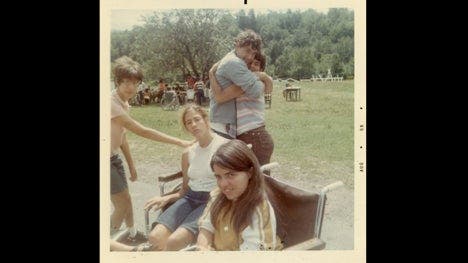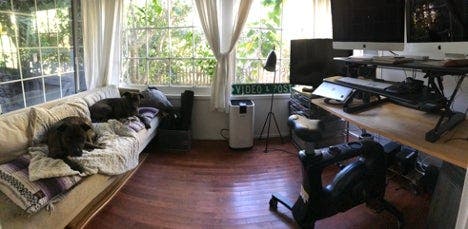Editor Eileen Meyer discusses her work on the award-winning Netflix documentary, Crip Camp.
Winner of the IDA Documentary Award for Best Feature and nominated for Best Editing, Crip Camp unveils the groundbreaking disabled youth summer camp, Camp Jened, and the inspiring stories of the campers in their fight for equality. Told firsthand from co-director Jim LeBrecht, who was a camper himself, the film sheds light on the everyday challenges for the disabled before the American with Disabilities Act was enacted in 1990. The film was recognized as an audience favorite at the 2020 Sundance Film Festival with the Audience Award for U.S. Documentary.
Editor Eileen Meyer helped the directors piece together the story balancing archival footage with supportive testimonials. We asked Eileen about editing the film remotely, how Premiere Pro helped her save time while working with many different types of archival footage, and lessons she’s learned during her career.
How and where did you first learn to edit?
I first learned to edit when I was a student at Hampshire College. I started studying documentary film in my first year there, and since the education model is very project-based, I was able to start editing right away. My very first project was on 16mm film and edited on an Steenbeck flatbed with a splicer and tape!
How do you begin a project and set up your workspace?
I usually work on 1-2 projects per year and I prefer to change my workspace at the beginning of each one, so it feels refreshed and different. I just recently added a standing desk converter and an under-desk bicycle, which I hope will keep me more active this coming year. In terms of a starting point for a project, I like to spend at least a couple of weeks screening footage, having lengthy conversations with the director about creative ideas, and working on laying out a structure for the film.
Tell us about a favorite scene or moment from this project and why it stands out to you?
I have a lot of favorites scenes and moments - it’s hard to pick just one! I would say the scene at the end of summer camp when all the kids are passing the mic around and talking about their parents. We always knew this was a pivotal scene where we experience the kids finding their voices and agency, but it was incredible to watch it change and develop over the final months of editing. Mary Lampson, our co-editor brought true magic to this scene.
What were some specific post-production challenges you faced that were unique to your project? How did you go about solving them?
This was the first project I worked on that was mostly a remote workflow. The directors and assistant editor and associate producer were in Berkeley, while I was in New York and Los Angeles, and our co-editor and additional editor were in Maine. We all had duplicated media on our drives but had to figure out how to split up the project and share our sequences. It required very good communication, so that we all knew who had the “master” project at any given time and what everyone was working on. We also had very long virtual calls to discuss our creative ideas- our longest one lasted nearly 7 hours!
What Adobe tools did you use on this project and why did you originally choose them? Why were they the best choice for this project?
We used Premiere, Photoshop and After Effects. Adobe was absolutely the best choice for this project because we were incorporating many different types of archival materials, and not having to transcode everything saved us so much time. Lauren Schwartzman, our incredible assistant editor and associate producer, also used the powers of After Effects to create her unique subtitles.




